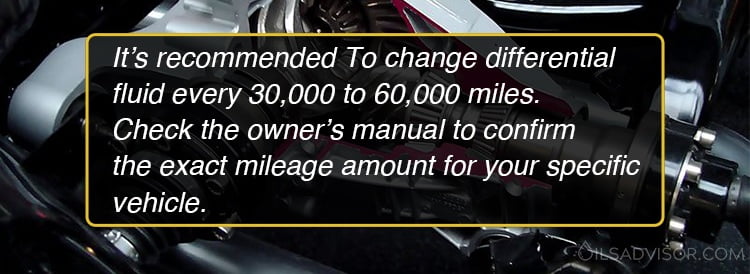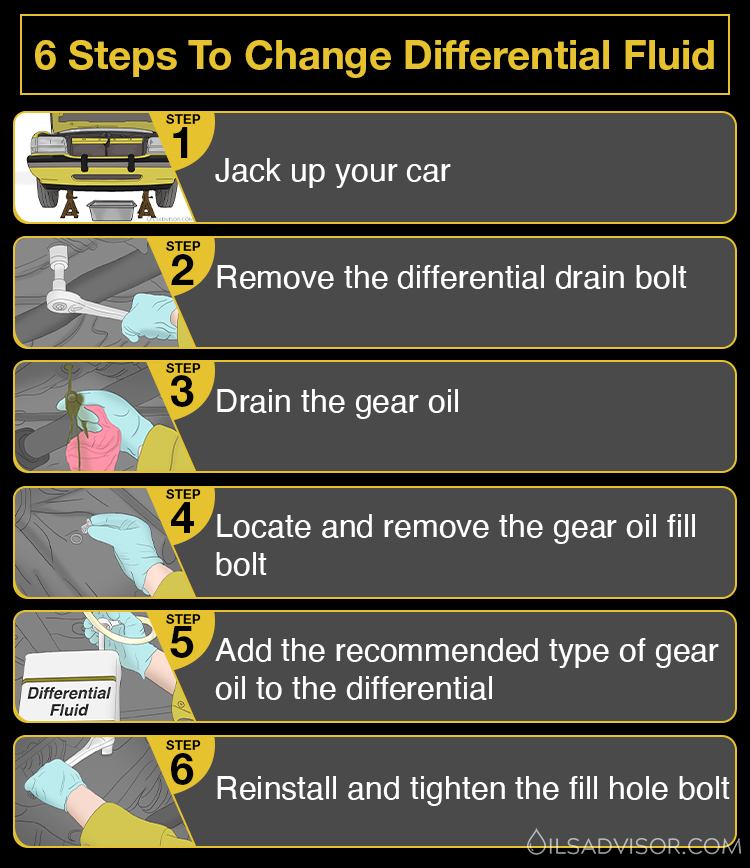A differential fluid change is just as important as changing the oil in your car engine to keep it running smoothly.
This type of fluid eliminates metal-to-metal contact which weakens gears and can eventually cause them to fail. Because it’s not as widely discussed as engine oil, most car owners frequently overlook this aspect of maintenance.
This post will explain everything you need to know about changing your differential fluid. If you carefully follow the instructions, you will have no trouble in maintaining your vehicle in good shape.
Read on for more information!
Is It Necessary To Change Your Car’s Differential Fluid?
Yes, it is. Why?
Like any other component of the vehicle, well-lubricated parts in the differential will equal peak performance. This is where the differential fluid comes into play. Its job is to lubricate the differentials, while further protecting your car’s gears from wear and tear caused by friction as they move against one another.
If you don’t change your differential fluid frequently enough, the differential can become noisy. Moreover, it can damage the axle’s gears, and eventually fail. Therefore, driving with contaminated or low differential fluid is dangerous because it can result in permanent damage.
Changing the differential fluid in your car will make it run smoothly and safely. This maintenance practice protects the gears from potential harm as well as saves you money on future car repairs.
How Often To Change Differential Fluid

The differential fluid degrades and becomes contaminated over time.
It can be harmful to your internal gears when left unchecked for an extended period of time. That’s why the replacement of differential fluid on a regular basis will help to prolong the life of your vehicle.
In general, most car manufacturers recommend changing your car’s differential fluid every 30,000 to 60,000 miles. For proper maintenance, the differential fluid must be changed regularly and at specific mileage intervals. If you use your vehicle in severe conditions, this interval will be reduced. As a result, you will need to replace your differential fluid sooner than recommended. Make sure to consult your owner’s manual for the exact mileage amount.
Read more: Low Oil Pressure At Idle: Causes & Repair Guide
How To Change Differential Fluid
It’s actually quite simple to change the differential fluid. Although it may become a little messy, following these simple steps can save you a lot of trouble in the long run.
Preparation
Tools required
This task will necessitate the use of:
- Jack stand
- Gloves
- Wrench
- Funnel
- Hand pump
- Hose
- Rag
- An empty container
- New differential fluid
Time estimated: 45 mins
6 Steps To Change Differential Fluid

Step 1: Jack up your car
Park the car on a level surface and jack it up by using proper jack points. This will allow you to get to the drain and fill plugs.
Step 2: Remove the differential drain bolt
Locate the differential bolt and use the appropriate wrench to loosen the drain bolt. The drain bolt will look like the one used to drain engine oil from an oil pan. Make sure you are wearing gloves to avoid getting the fluid in your hands. Also, ensure that the vehicle is cool before doing this, or you may get burned by the fluid.
Step 3: Drain the gear oil
Place a container underneath your vehicle to catch the fluid as you drain it. It should be positioned directly beneath the drain bolt and allowed to flow out until every last drop makes its way out of the drain hole. Make sure to clean the area if it is dirty. After the differential has been completely drained, replace the drain bolt and tighten it with the wrench.
Step 4: Locate and remove the gear oil fill bolt
Depending on the type of vehicle, the fill bolt can be found on top of the differential or on the backside. Once you’ve located it, carefully unscrew the fill bolt with the appropriate wrench.
Step 5: Add the recommended differential fluid
You can add differential fluid by pouring it in or by using a hose or a pump.
If you’re pouring the fluid in, put the funnel into the hole and start filling the new differential fluid in. Slowly add the correct amount of fluid until it begins to leak.
In some cases, you may be unable to pour the fluid directly into the fill hole because of its position. It may be best to use a hand pump to fill the differential with fluid. Pump it continuously to add new fluid to the differential until fluid starts leaking from the filler hole. Check your vehicle’s owner’s manual to see what type of differential fluid the manufacturer recommends.
Note: The amount of fluid to add will also be specified in your owner’s manual.
Step 6: Reinstall and tighten the fill hole bolt
Once the appropriate amount of fluid has been added, reinstall the plug and tighten it with a wrench. Clean the fill plug area to detect if there are any leaks. Drive the vehicle for a short distance, then double-check that neither bolt is leaking.
Differential Fluid Change Cost
A differential fluid change can range from $70 to $150 depending on your vehicle and where you take it. The fluid itself can cost anywhere between $30 and $80, while labor can cost around $40 to $70.
Read more: AT Oil Temp: Meaning, Causes, and Repair Guide
Final Words
Proper lubrication is required to keep the differentials operating at peak efficiency. You must use the proper fluid and change it when due to ensure your vehicle is healthy.
This will help you avoid costly repairs and keep your differential in good condition. Remember to always consult your owner’s manual for fluid type and mileage intervals of replacement.
Share with us your experience of changing the differential fluid for your vehicle in the comment box below.
Related Reads
- Best Oil For Honda CRV Explore the best oils for your vehicle, ensuring all fluids, including differential fluid, meet optimal standards – Find out more.
- Coolant Boiling In Reservoir: Causes & Solutions Learn how maintaining all vehicle fluids, including differential fluid, helps prevent issues like coolant boiling – Explore here.
- Understanding ILSAC GF-6: The Best Engine Oils for Modern Vehicles Discover the latest in engine oil standards and how they relate to maintaining overall vehicle health, including differential fluid changes – Discover now.


